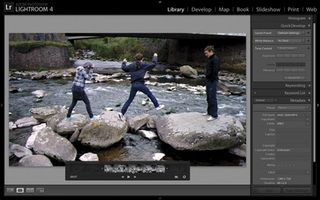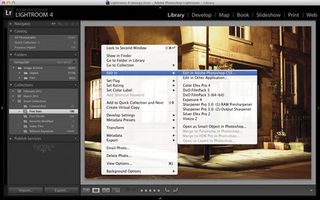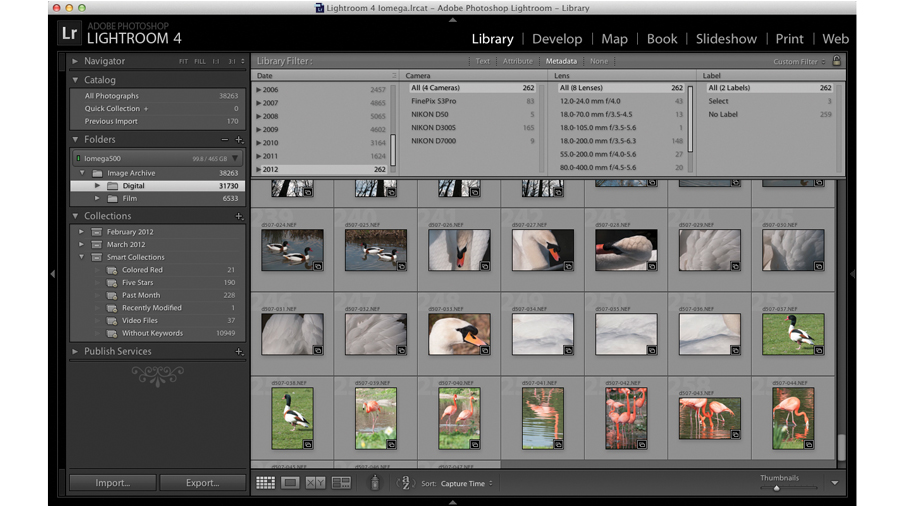TechRadar Verdict
Pros
- +
Better dynamic range controls
- +
Effective new Maps module
- +
Scope and power of editing tools
- +
Integration with Photoshop
Cons
- -
Can be slow with lots of images
- -
Folder and Collection separation
Why you can trust TechRadar
Photographers don't just need to edit photos, they need some way of organising them too. You can use a folder browsing program like Adobe Bridge or, if you have one of the most recent versions of Photoshop Elements, you might be using the Elements Organizer.
But Lightroom is an attempt to bring these two functions together, so that you can both organise your photos and edit them within a single application.
Get Photoshop Lightroom 4 from Adobe
Lightroom's image adjustments are non-destructive. They're stored within the photo library and associated with the relevant pictures rather than being applied to them directly. This is the approach taken by Apple's own Lightroom rival, Aperture.
Under the hood

Lightroom 4 looks very much like Lightroom 3 at first glance, but there have been some important changes. These include redesigned and improved image-editing tools, integrated photo books, a new Maps module for locating your photos on a map, basic video editing and enhancement tools, 'soft-proofing' for checking how your photos will look in different output devices and various other improvements.
The image processing engine is new, and Adobe has swapped the old Recovery and Fill Light sliders for Whites and Shadows. These aren't direct replacements, exactly, but they're the nearest equivalents, and much improved.
Now, when you recover highlights with the Whites slider, there's far less impact on the tones in the rest of the image. Likewise, the Shadows slider recovers dark shadow detail without over-lightening the whole picture.
Lightroom 4 brings new localised adjustment tools too. It's now possible to 'paint' white balance, noise reduction and anti-moire effects on to areas of the image, in addition to existing tone and colour modifications.

In the 'soft-proofing' mode, you can check how your images will appear when they're printed on devices with a different colour gamut, like different models of desktop printer or types of paper. 'Out of gamut' colours are highlighted in red, and you can adjust either the saturation or the hue of these particular colours to bring them back in range.
Soft proofing doesn't enable you to get more colours out of your printer, but it does let you see what will happen and control the outcome more effectively.
Adobe has added basic video support, too. Lightroom 4 won't replace your video-editing app, but it does let you trim and clean up your video clips so that you're starting with better raw materials. You can even apply a range of Lightroom enhancements and presets via the Quick Edit panel.
Not all of the regular Lightroom adjustments can be used with video, but it displays a dialog with checkboxes against the adjustments that will be applied. For example, you can apply colour adjustments to match up clips shot in slightly different lighting, or apply a warm, retro look from the range of presets available. Clips can also be exported as H.264 files, or uploaded directly to Facebook or Flickr.

The new Map module works just as you'd expect if you've used similar tools in Aperture, iPhoto or on Flickr. Images which have location information embedded in the EXIF data show up on pins on the map, and images which don't have this data can be added to maps manually - they're now 'retro-tagged' with this information and show up on maps.
Lightroom 4's mapping tools are straightforward to use, and have extra features, such as the ability to create favourite 'locations', which are broader, user-defined areas containing a number of different shooting locations. And you can use Lightroom's filtering tools, displayed as a series of columns at the top of the Grid view, to filter photos in a Collection or a folder by their location.
What's the Blurb?

The new Book module is provided by Blurb, one of the better-known online photo book suppliers, and offers both pre-designed books and the ability to create your own layouts. It's much better than struggling with standalone apps or online book creation tools, and you can keep track of your books from within Lightroom.
Adobe's also introduced new options for its DNG file format, a 'universal' RAW format designed to replace the multiplicity of different camera RAW files, though so far Adobe seems to be the only software publisher putting much weight behind it. You can now 'group' related images together in Collections. Previously, this was only possible in folders, which was an unexpected limitation.
Lightroom still separates folders and Collections (albums) in the same rather awkward way, though. Folders are displayed in one panel, but Collections are created and managed in a different one. You might create a Collection of images from within a Folder, but they're not listed in the same panel and they are, as far as Lighroom is concerned, unrelated.
The interface remains quite dark and cluttered too, and Lightroom can feel sluggish when you're scrolling through large numbers of images. This is where Lightroom 4 still feels slightly inferior to Aperture, it's chief rival.
Lightroom's editing tools are more comprehensive, but Aperture is still the fastest and most effective at browsing and organising. Lightroom is more transparent about how it manages the files on your hard disk, but Aperture has the option to store original images internally in a single library file that's easy to keep track of.
You can compare the features as much as you like, but in the end it's a very subjective thing. Lightroom 4 ticks all the boxes, and if you liked version 3 then it's an important upgrade. But its appearance and way of working are different to Aperture's and you need to try both before deciding which one's best for you.

Rod is an independent photographer and photography journalist with more than 30 years' experience. He's previously worked as Head of Testing for Future’s photography magazines, including Digital Camera, N-Photo, PhotoPlus, Professional Photography, Photography Week and Practical Photoshop, and as Reviews Editor on Digital Camera World.
Most Popular






